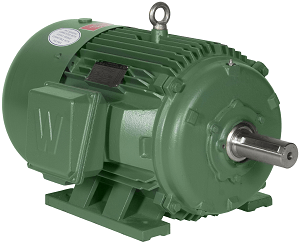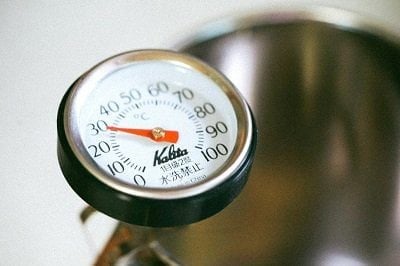
Overheating is one of the most common ways to damage electronic and electrical machines. This is especially true for electric motors.
The temperature range of a motor is clearly defined by the instruction manual and the motor nameplate. An ambient operating temperature range of -20° C to 40° C is most common for general purpose industrial motors. This temperature range is consistent with most common industrial applications. Applications where ambient temperatures exceed 40° C need special consideration for components like the seals, fan, insulation and the grease in the bearings.
Even though a motor’s ambient operating temperature is in most cases limited to 40° C, general purpose industrial motors have components, like motor windings, that by design get much hotter. The difference between the ambient temperature and the average temperature of the windings under full operating load is known as temperature rise. Inevitably, some of the energy provided to a motor is lost as heat, and a powerful or inefficient motor can have more than 105° C in permissible temperature rise for Class F insulation systems.
To compensate for the temperature rise, manufacturers select durable, insulative magnet wire, ground insulation, varnish, lead wire insulation, tapes, strings and sleeves for motor assembly. Each of these components is assigned to a National Electrical Manufacturers Association (NEMA) MG1-2016 insulation class, which evaluates motor components based on 20,000 hours of rated motor service life operating at the maximum permissible operating temperature. The standard also acknowledges that the temperature rise may be locally higher on some components, so there is a hot spot allowance when selecting insulation temperature class for motor components.

For example, a motor with a 100° C temperature rise would require class F materials, as the standard assumes a 40° C ambient temperature, and the class provides 15° C tolerance. Every 10° C above the rated operating temperature will shorten the motor life by half.
Running a motor in cold and freezing conditions raises additional concerns, and overheating remains a major risk. Overheating can occur if ventilated motor enclosures are covered in ice or snow. Overheating can also be caused by an overload situation or pushing the motor into service factor. It is important for operators to continue to follow motor operating specifications as normal in cold weather.

Figure 2. When temperatures are lower than -20° C or higher than 40° C, operators need to take extra care of components such as grease, bearings, seals, fans, insulation or leads. Source: istock.com/MankiKim
There are also individual component concerns when temperatures fall below -20° C, namely seals, fans, and the grease in the bearings. Some plastics and elastomers get brittle in cold temperatures, so climate-tolerant material alternatives, such as silicone in place of neoprene, should be considered. A seal of nitrile rubber might be better served by a metal seal or enhanced nitrile compound. The motor lubricant must also maintain adequate viscosity in these temperatures to lubricate all rubbing components.
Cold weather also raises concerns for Class I explosion-proof motors. Explosive pressure of combustible gases tends to be higher in cold temperatures. Explosion-proof enclosures and flame paths must be able to withstand added pressures of a cold climate.
These are among some of the most common concerns of operating electric motors in hot and cold climates. However, the vast majority of industrial motors will provide reliable service throughout the -20° C to 40° C temperature range, provided the motor is in compliance with the duty cycle and other manufacturer specifications.
Each application is unique and guidance from the manufacturer is often insightful. One of WorldWide Electric’s seasoned engineers can assist with preparing a motor for challenging temperatures. Call the 24/7 customer support line to get help preparing motors for the next season – 1-800-WWE-SERV.


